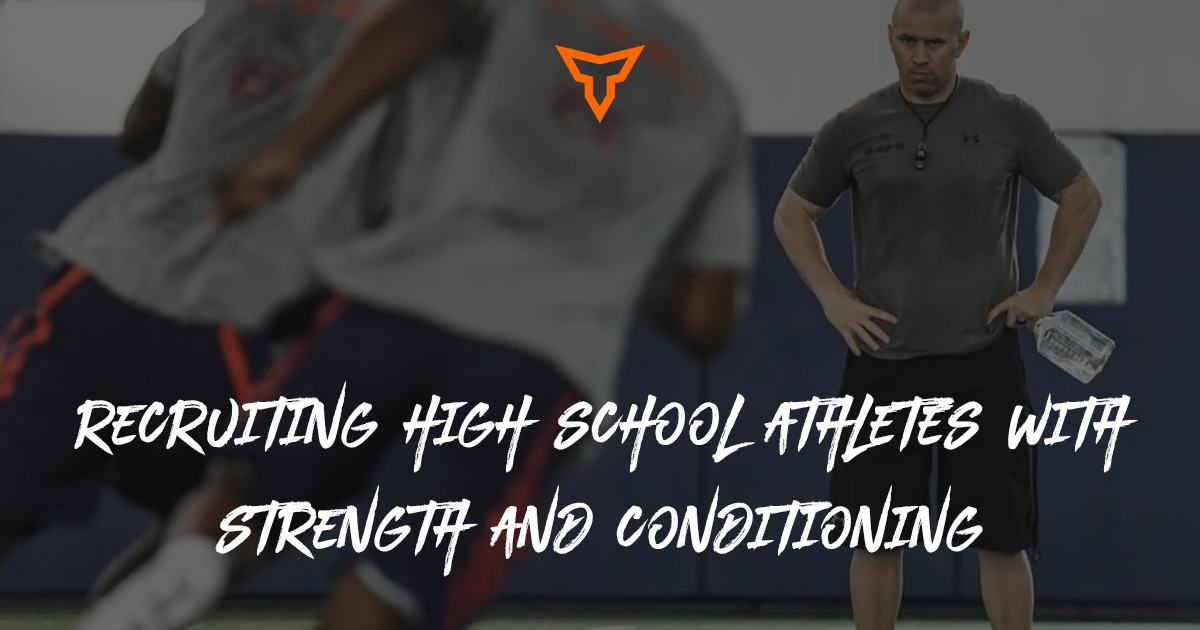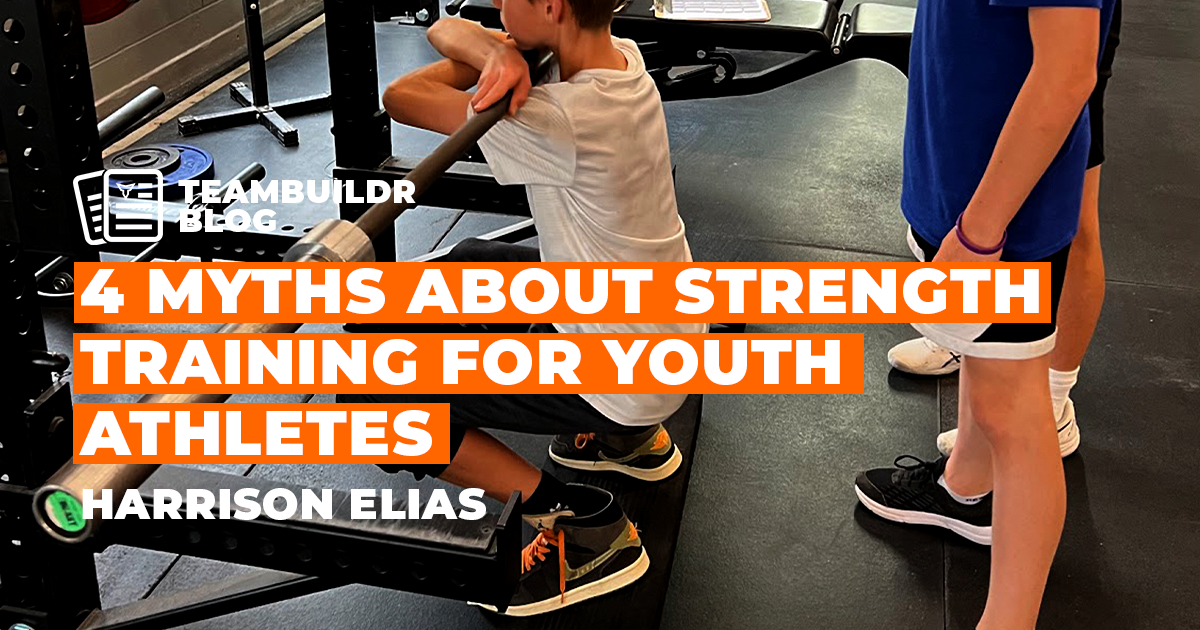Integrating Strength & Conditioning into Phys Ed
I was sitting at the Tennessee State Clinic for the NHSSCA and I remember a lecture that continues to stay with me to this day. Coach Justin Loudon, Head Strength & Conditioning Coach at Ezell Harding Christian School, gave a lecture laying out how the Tennessee State Standards for Physical Education can be infused with a strength & conditioning program.
I will be honest, I did not even think about looking into physical education to incorporate strength & conditioning, much less look at the state standards for physical education. This idea stuck with me when I went to take the Praxis exam for PE and eventually passed it to add to my current teaching license.
Over the last few months, I have been able to see how I could bring this idea into my setting, the public high school. While this may not be everyone’s situation, I think understanding how to properly implement state standards with strength & conditioning principles to have stronger athletes, students, and schools. From this idea, here are 3 things to do to incorporate strength & conditioning into your physical education program:
Be Educated, Be Certified, Be Licensed
Kind of simple, yes? Not always. When I started my career as an educator, I had no desire to teach physical education or anything health-related honestly. I thought PE teaching spots were only for head coaches and, if you were lucky, an assistant coach of a team on campus. However, in the last couple of years, I have seen a transition of the high school PE position being directed to strength & conditioning coaches. Much so that they are the head of the PE department. Makes total sense, if you have an individual that has the proper background/education, is CSCS/SCCC/USAW certified, and has a license to teach in public schools, that is a recipe for success in your PE department.
Think about it, why would we, as educators, just roll out the balls or tell kids to walk around the gym? What is that teaching them? Are we teaching them to be physically literate? Are we giving them the necessary tools to take care of themselves past their years under our supervision? Kids crave structure, whether they want to admit it or not, they need structure. Being a licensed, educated, and certified educator does exactly that for our students.
Match Physical Education State Standards to Your Strength & Conditioning Program
Let's look at some of the Tennessee State Standards for physical education.
MS.6 Engage in specialized skills in health-related fitness activities (e.g., yoga, resistance training, fitness walking).
MS.7 Apply training principles to enhance an individual's current level of fitness (e.g., F.I.T.T., overload, specificity, progression).
This is directly copied and pasted from the Tennessee website. It is black & white giving us that we, as strength coaches & physical educators, need to engage in resistance training, to engage in other activities. Also, not just random activities, but activities to enhance the fitness level of our students through progression, through the overload principle, which we do with our athletes daily. Surely that’s the only time we see state standards lining up with strength & conditioning!
Nope, quite the opposite. Just a few more examples of standards in Tennessee:
FPA.1 Explain how health-related components of fitness impact overall health status (i.e., body composition, cardiovascular endurance, muscular endurance, muscular strength, flexibility).
FPA.2 Participate in health-related fitness activities (e.g., weight training, stretching, cardio workouts).
FPA.3 Explain how skill-related components impact sports and fitness (i.e., balance, agility, power, speed, coordination, and reaction time).
FPA.4 Participate in skill-related fitness activities (e.g., agility ladder, yoga, plyometric).
FPA.5 Apply fitness terminology in appropriate settings (e.g., aerobic/anaerobic, target heart rate, FITT principle, isometric, warmup/cool-down).
FPA.6 Define training principles (e.g., overload, specificity, progression).
FPA.9 Discuss current trends in fitness technology (e.g., apps, heart rate monitors, electronic activity tracker).
FPA.11 Design a personal fitness plan based on the FITT principle i.e., Frequency, Intensity, Time, Type
PSR.9 Apply best practices for participating safely in physical activity (e.g., equipment/facility use, peer awareness, environment, personal medical needs).
These are just SOME of the standards for Tennessee PE, now let’s break this down. Explain health-related components of fitness, strength & conditioning do exactly that. Participating in health-related activities, strength & conditioning does exactly that. Explain & learn skill-related fitness, strength & conditioning does exactly that. Discuss current trends in technology, strength & conditioning does exactly that, and more. Demonstrating positive sportsmanship & behavior, strength & conditioning does exactly that.
Any standard that is given for physical education can be met and more with having a strength & conditioning program in place. These are daily practices that we do as strength & conditioning professionals to improve the performance of our sports teams, why not use the same ideology as a PE teacher that does strength & conditioning for the school? Makes too much sense.
Communicate with EVERYONE
Communicate what you are doing, how you are doing it, and everything else in between with anyone who is involved with the students. I started this in my new role. It helps a ton for teachers, parents, administrations, superintendents, or anyone really to understand what we do and why we are doing things inside of our physical education/strength program.
You don’t know what you don’t know. How is the administration supposed to know what a strength program looks like without having one in years past? How are parents and coaches supposed to know that their athlete and child are in the hands of a proper individual who is looking out for their best interest? How are the students supposed to know that they can trust what we are doing?
Communicate all the time. Communicate goals, standards, implementation of technology, building strength, injury prevention, etc… Build that bridge between us and everyone out of our program. Even people inside our program, let them know what is going on and where we are going. I showed our improvements in speed & strength to our softball/volleyball athletes here and watched our girls buy into what we are doing. I showed results to our head softball and volleyball coaches and watched them buy into our strength program to help the overall athleticism of our girls.
Could there be more to add? Of course, however, this is a foundation to start incorporating strength & conditioning into a public school physical education program. High school physical education is strength & conditioning.
Subscribe to our blog
Subscribe to receive the latest blog posts to your inbox every week.
Related posts
.jpg)
Don't Skip Conditioning, Redefine It

Will S&C Be the HS Athlete's Next Recruiting Weapon?

